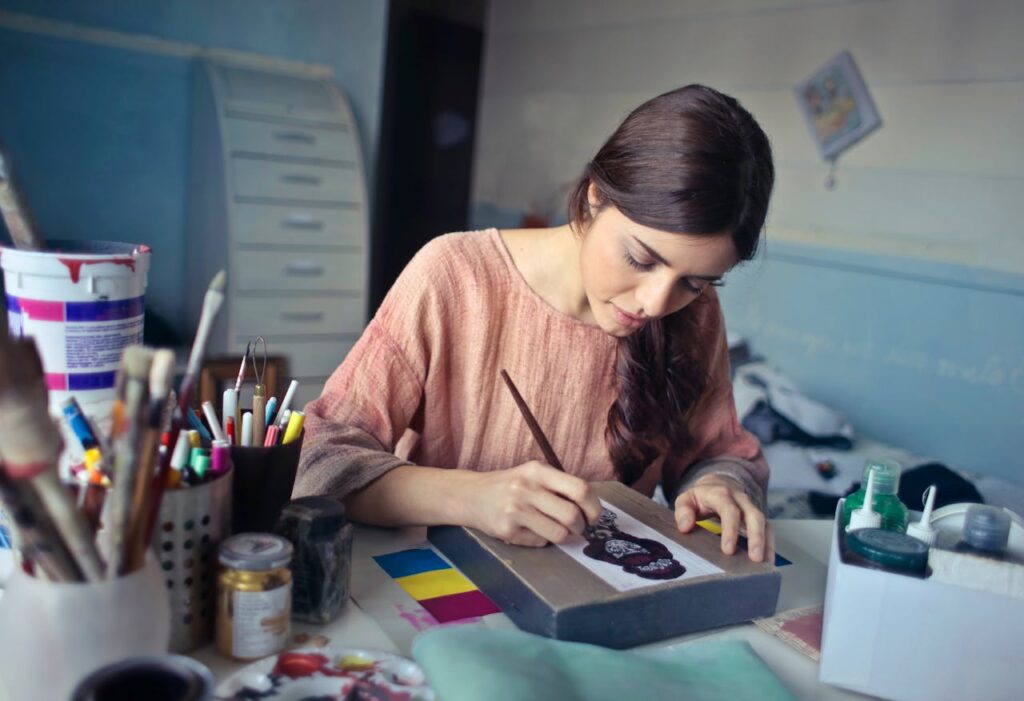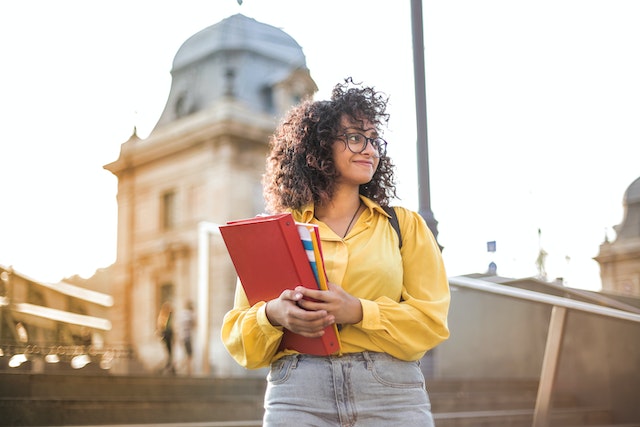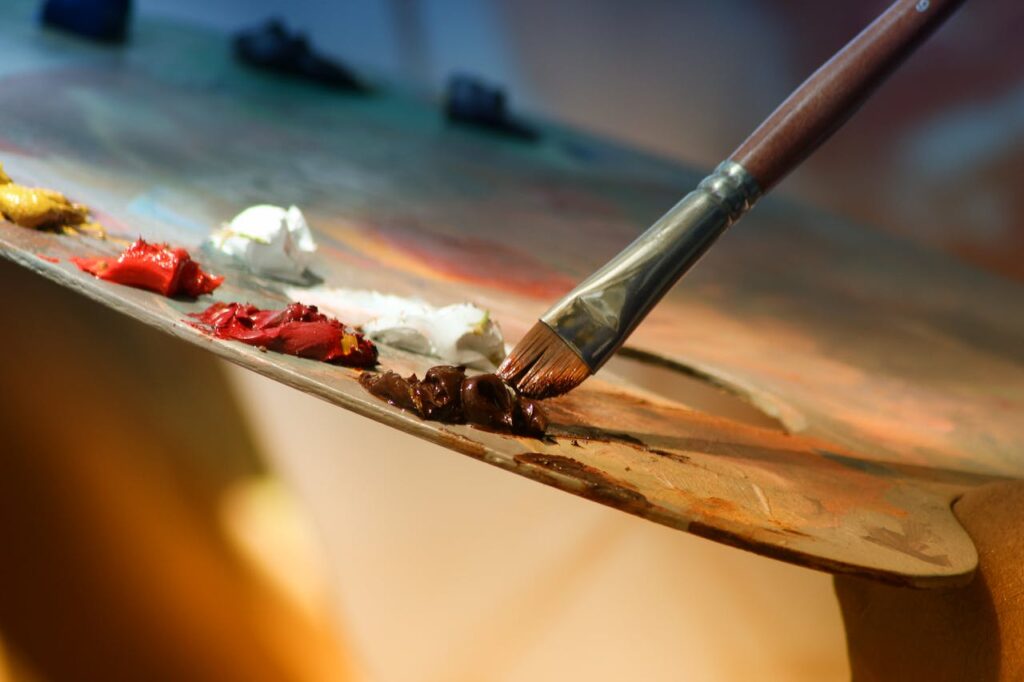As a writer and tutor with extensive experience in the IB Diploma Programme, I’ve gained invaluable insights into the challenges and triumphs of crafting a standout Visual Arts Extended Essay. Today, I’m excited to share these insights with you, particularly about choosing the best Visual Arts Extended Essay topics.
Visual Arts Extended Essay Requirements
In my opinion, this essay is not merely an academic task but a canvas where you paint your intellectual curiosity, creativity, and critical thinking skills. According to general IB criteria, your essay demands more than superficial topic research. It requires a deep investigation of the essence of your chosen subject, supported by meticulous research and personal engagement. Here’s a breakdown of what the IB looks for in an exceptional Visual Arts Extended Essay.
In-depth Understanding of the Topic
Your essay should highlight your chosen subject in a way that demonstrates a profound comprehension of its nuances and complexities. It’s not enough to simply relay information; you must dig into the topic’s significance within the Visual Arts course.
Clear and Coherent Arguments
Every claim you make should be underpinned by solid evidence and articulated logically and persuasively. Your essay should flow seamlessly from one point to the next, with each argument building upon the last to support your thesis.
Effective Research
High-quality research is the backbone of your essay. It includes primary sources like artworks and artist interviews and secondary sources like scholarly articles and critical essays. Your ability to select, analyze, and reference these materials is crucial.
Personal Engagement
The IB values your unique voice and perspective. Your essay should reflect your personal experience with the subject, including how your understanding and appreciation of the topic have evolved throughout your investigation.
Analysis of Artworks
You’re expected to choose relevant artworks and dissect them within their historical, cultural, and theoretical contexts. This analysis should go beyond mere description to examine the significance of the artworks with your research question. Moreover, employing the correct terminology demonstrates your knowledge of the subject and boosts your essay’s clarity and precision.

Visual Arts Extended Essay Topics and Research Questions
Choosing a topic for an Extended Essay is a significant step that directly affects the quality of your work and your grade. I will now give you some ideas that you can use and improve upon as you see fit. Here are the best topics and research questions to consider for this IB subject:
- The Influence of Cultural Heritage on Contemporary Aboriginal Art. How does contemporary Aboriginal art reflect the cultural heritage and traditions of its creators?
- The Evolution of Feminist Themes in Modern Art. How have feminist themes evolved in modern art from the 20th century to the present day?
- The Impact of Digital Technology on Traditional Painting Techniques. How has digital technology influenced traditional painting techniques and artists’ approaches to creating art?
- The Role of Street Art in Urban Spaces. How does street art contribute to the identity and cultural landscape of urban spaces?
- Surrealism and Dreams: A Research of Symbolism. How do Surrealist artists use symbolism to depict dreams and the unconscious mind?
- The Renaissance Influence on Modern European Art. To what extent does modern European art retain the influences of Renaissance principles and techniques?
- Art as a Form of Social Protest. How is art used for social protest and political commentary in contemporary societies?
- The Psychology of Color in Abstract Art. How does color psychology affect abstract art’s interpretation and emotional impact?
- The Intersection of Fashion and Art in Modern Design. How have modern designers blurred the lines between fashion and art to create innovative works?
- Eco-Art: The Role of Art in Environmental Awareness. How do eco-artists use their work to promote environmental awareness and sustainability?
- The Representation of Gender Fluidity in Contemporary Art. How is gender fluidity represented in contemporary visual art?
- Cubism’s Influence on Modern Architecture. In what ways has Cubism influenced modern architecture and the design of public spaces?
- Photography as a Historical Document: Capturing Social Change. How has photography been used to document social change throughout the 20th and 21st centuries?
- The Revival of Classical Techniques in Modern Sculpture. How are classical sculpting techniques being revived and reinterpreted by modern sculptors?
- Art Therapy: The Healing Power of Creative Expression. How is art therapy utilized to facilitate healing and emotional well-being, and what evidence supports its effectiveness?
- The Renaissance to Modern Day: The Evolution of Portrait Painting. How has the art of portrait painting evolved from the Renaissance period to the modern day in terms of technique and representation?
- Art in Times of War: A Reflection of Society and Conflict. How do artists represent and reflect upon the impact of war and conflict in their work across different historical periods?
- The Influence of Japanese Art on Western Aesthetics. In what ways has traditional Japanese art influenced Western artistic aesthetics and practices?
- The Role of Art in Public Health: Murals and Community Well-being. How do public murals contribute to community well-being and health, particularly in urban areas?
- Sustainability in Art: Materials and Practices. How are contemporary artists incorporating sustainable materials and practices into their work, and what impact does this have on the art world?
- Animation as a Fine Art: Evolution and Acceptance. How has animation evolved as a form of fine art, and how is it being integrated into mainstream art discourse?
- The Role of Women in the Art World: From Creation to Curation. How has the role of women in the art world changed from creators to curators over the last century?
- Art and Technology: Virtual Reality as a New Medium. How is virtual reality redefining the boundaries of art and creating new forms of immersive experiences?
- The Revival of Folk Art in the 21st Century. What factors contribute to the revival of folk art in the 21st century, and how is it being reinterpreted in a modern context?
- The Influence of Pop Art on Modern Advertising. How has Pop Art influenced modern advertising and consumer culture?
- The Concept of Beauty in Contemporary Sculpture. How do contemporary sculptors challenge and redefine the concept of beauty in their works?
- Street Photography: Capturing the Essence of the Urban Experience. How does street photography capture and convey the essence of the urban experience?
- The Impact of Social Media on Contemporary Art Practice and Appreciation. How has social media impacted contemporary art practice, and how is art appreciated and consumed?
- The Representation of Mental Health in Visual Arts. How do visual artists represent and interpret mental health issues in their work, and how does this impact public perceptions?
- The Symbolism of Animals in Medieval Art. What roles and symbolism do animals play in medieval art, and how do these representations reflect the beliefs and values of the time?
- The Cultural Significance of Tattoos in Indigenous Societies. How do tattoos function as a form of cultural expression and identity in indigenous societies, and what are the traditional techniques and meanings behind them?
- Art Censorship: The Fine Line between Provocation and Freedom of Expression. Where does the line lie between provocation and freedom of expression in art, and how have artists dealt with censorship across different cultures and eras?
- The Influence of Art on Architectural Design. How have specific art movements significantly influenced architectural design, and what are the most notable examples of this intersection?
- Interactive Art: The Role of the Spectator in Contemporary Art Installations. How do contemporary art installations incorporate interactivity, and what role does the spectator play in completing these works of art?
- The Renaissance of Collage in Digital Art. How has the medium of collage been reinterpreted in the digital age, and how do digital collages challenge our perceptions of reality and art?
- The Revival of Analog Photography in the Digital Age. What factors contribute to the resurgence of analog photography in the digital era, and how does it affect contemporary artistic expression?
- The Role of Minimalism in Modern Design Aesthetics. How has minimalism influenced modern design aesthetics, particularly in the digital interface design of the 21st century?
- The Evolution of Self-Portraits in Digital Art. How has the emergence of digital art forms transformed the traditional self-portrait?
- Art and Resistance: The Role of Visual Arts in Social Movements. How have visual arts been used as a tool for resistance in global social movements?
- The Intersection of Performance Art and Multimedia Installations. What are the implications of combining performance art with multimedia installations for audience interaction and artistic expression?
- The Depiction of Mental Illness in Contemporary Art. How do contemporary artists represent mental illness, and how does this impact societal perceptions?
- Biographical Influence on Artistic Style. How do the biographies of artists influence their artistic styles and the themes they explore in their work?
- Postmodernism and Irony in Visual Arts. How is irony used as a stylistic and thematic element in postmodern visual art?
- The Role of Art in Cultural Diplomacy. How is visual art employed as a tool in cultural diplomacy, and what are the outcomes of such initiatives?
- Sculpture and Space: The Dynamics of 3D Art in Public and Private Spheres. How does the sculpture’s placement in public versus private spaces affect viewer perception and interaction?
- The Influence of Classical Mythology on Modern Visual Arts. How do modern visual artists incorporate classical mythology, and what new meanings are ascribed to these ancient narratives?
- Consumer Culture and Pop Art: Reflections and Critiques. How does Pop Art reflect and critique consumer culture through its visual representations?
- Artistic Representations of Climate Change. How do artists use different media to address the theme of climate change, and what reactions do these works evoke?
- The Art of Book Covers: Graphic Design Meets Literature. How does the art on book covers contribute to interpreting and marketing the literature it envelops?
- The Renaissance of Artisan Crafts in Contemporary Art. How are traditional crafts like weaving, pottery, and woodworking being revitalized in contemporary art?
- The Art and Science of Color Theory in Visual Design. How do visual designers use color theory to enhance usability and aesthetic appeal in their creations?
- Digital Art and Artificial Intelligence: Collaboration or Competition? How does integrating artificial intelligence in digital art challenge traditional notions of creativity and authorship?
- The Role of Political Cartoons in Visual Commentary. How do political cartoons contribute to public discourse, and what makes them effective or controversial?
- Graffiti and Urban Identity. How does graffiti contribute to the identity and culture of urban environments?
- The Visual Language of Comics and Graphic Novels. How do comics and graphic novels use visual language to create complex narratives and emotional depth?
Choosing the right topic is like picking the perfect palette for a masterpiece. In my experience, the best topics pique your interest and offer ample room for investigation and analysis. Check out our guide to using Extended Essay topics from the Internet to improve your research approach.
Think about the issues, movements, or artists that fascinate you. Are there particular questions or controversies in the visual arts world you want to research? Remember, a well-chosen topic can be the difference between an essay that feels like a chore and becomes a passion project.
Don’t let the stress of the IB curriculum hold you back.
Are you struggling to come up with topic suggestions for your IB Extended Essay? Or do you need help with Internal Assessment?
Our experienced writers can help you choose the perfect topic and assist you with any assignment.
You can order an Extended Essay tailored to your specific subject and requirements.
Our experienced IB writers are always ready to help.
Simply click:

More Topics to Read:
- How To Set Goals For Success In The IB DP?
- Does IB Prepare You for College?
- What Is IB Music MLI? Guide for IB Students
- How Many Points Do You Need for the IB Diploma?
- Do Mock Exams Matter in IB?
- IB English Language and Literature. Guide for IB Students
- What Level of Math to Choose in IBDP?
- Transitioning from MYP to DP: What to Expect
- The Evolution of the IB Programme: A Look into Its History
- Interdisciplinary Nature of the IB. A Closer Look at Transdisciplinary Skills
- How to Engage in Constructive Feedback in the IB?
Conclusion
So, your Visual Arts Extended Essay showcases your analytical skills, creativity, and passion for the arts. Use this opportunity to research a topic that resonates with you, and remember that the process is as important as the outcome. With dedication, curiosity, and a little guidance from those who have walked this path before, you’ll be well on your way to writing a high-grade Extended Essay. Also, if you need some help or get more topic suggestions, just contact our experts from IB Writing Service.

